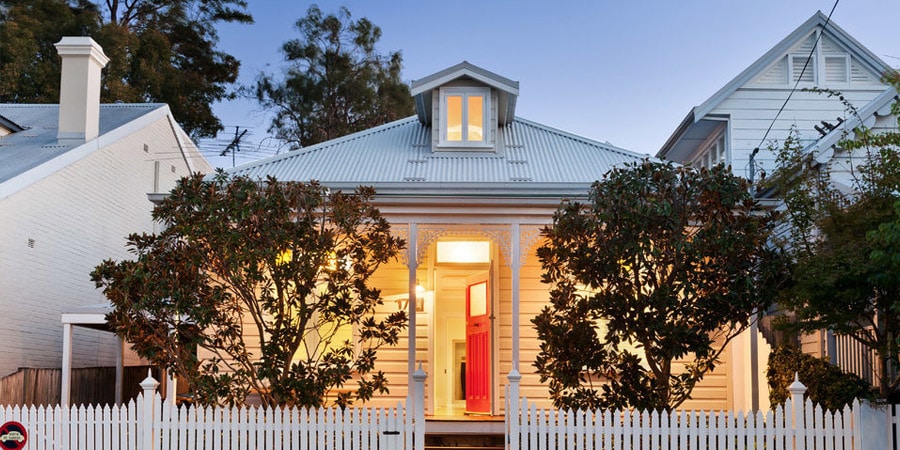Home > Home Loans > Compare Five-Year Fixed Rate Home Loans
Compare Five-Year Fixed Rate Home Loans
Compare home loan rates for first home buyers, refinance or investment with Savvy today.
Author
Savvy Editorial TeamFact checked
If you’re planning to buy property in the near future, you’re probably going to need to take out a mortgage to help make your property dreams come true. Often, by locking in a fixed rate on your home loan, you can minimise costs over time and ultimately come out better off than if you hadn’t. Here, you can compare all of the best options for five-year fixed rate home loans in order to find the best way to make your property purchase a reality.
Why should I get a five-year fixed rate home loanfive
Five-year fixed rate home loans offer borrowers the option to ‘fix’ the interest rates on their home loans to a pre-determined rate for five years from the borrowing date. This offers borrowers protection against interest rate fluctuations over the short to medium term and can help to make repayments more manageable, as the monthly amount payable towards your home loan will remain consistent. This allows for easier budgeting, and a greater capacity to manage your finances overall.
Borrowers will generally be best off opting for a five-year fixed rate loan if current interest rates are relatively low and they believe that they’re unlikely to drop further in the next few years. If you view interest rates as being over-inflated and likely to drop soon, you’d probably be better off choosing a variable rate loan to capitalise on this predicted change.
Five-year fixed rate periods are particularly appealing in comparison to shorter periods, as the level of certainty which you can get with regard to your mortgage repayments can be higher for longer. The period immediately following the purchase of your home is when you will most want to be able to safely predict your monthly repayments, possibly make extra repayments to reduce future interest costs and ensure that you are financially prepared for the possibility of interest rate hikes down the line.
By locking current rates in for a period of five years you can allow yourself a substantial amount of time to strengthen your finances while enjoying the certainty that fixed rates offer, and truly place yourself in a position to handle your home loan moving forward.
How should I compare five-year fixed rate mortgages
Comparing five-year fixed rate mortgages is easily done when you use Savvy’s online comparison tool. You can gain an insight into the different fixed rate finance options at your disposal and contrast them in the areas that matter most to you. When exploring your options for a five-year fixed rate home loan, there are a variety of factors which you should carefully compare, including:
Interest rate
The whole point of opting for a fixed rate loan is to take advantage of unchanging rates, so with this in mind you will want to lock in the lowest rates possible. By taking advantage of low rates throughout your fixed period, you can place yourself in a strong position to save funds for other investments, make extra payments to pay off your loan faster or simply make some extra contributions to your travel fund.
Split loans
If you are a bit unsure about the idea of locking in an interest rate which is applicable to the entirety of your loan principal, you could consider taking out a split loan. Because the current interest rate is only locked for a portion of your loan, you will not lose out so greatly if rates are to change in your favour. On the other hand, though, if rates are to swing upwards, you will still have optimised your loan (somewhat) to insulate yourself against this. While split loans can be an appealing option, it is also important to note that these loan type will incur extra fees, as you will be essentially splitting your loans in two with fees payable on both.
Extra payments and offset accounts
If you are seeking any other particular home loan features to couple with your fixed rate mortgage, comparing whether or not different financiers offer these features should be a priority. Offset accounts allow you to reduce your interest payments by making principal-only contributions to your loan, while extra payment options let you pay off your mortgage more quickly by paying above the minimum pay cycle. These are attractive features which can make a big difference in your decision-making when choosing a loan. Most lenders will still offer offset accounts with fixed rate mortgages, but extra repayments are rarer. However, you should be sure of this before committing to one lender.
What can I do at the end of my home loan’s five-year fixed rate period?
At the end of the fixed rate period, you will have one of three options:
Refixing
If your lender allows, you can choose to refix your home loan to lock in a new interest rate for a similar time frame to your first fixed rate period. This choice typically works for borrowers when the interest rates have not changed in the interim and by locking in relatively low rates, you can continue to keep your interest costs down.
Switching to a variable rate
If you believe that interest rates are likely to shift in your favour in the near future, you might wish to simply allow your fixed rate period to elapse and revert to paying a variable interest rate on your home loan. While this option will not offer the absolute certainty of a fixed rate loan that can be helpful for budgeting, you might allow yourself the chance to capture more upside in your finances as interest rates drop, in addition to affording yourself greater flexibility when it comes to how you repay your mortgage (such as free additional repayments and paying off your home loan early).
Refinancing
Once your fixed rate period ends, you might choose to refinance your mortgage altogether to take advantage of significantly lower interest rates which can save you money over the long run. Another reason you may choose to refinance is to take out a split loan, which fixes the rates on one portion of your mortgage and applies a floating rate to the rest.
Case study: realising savings with a five-year fixed rate mortgage
Jack wishes to purchase a home which will require him to borrow $500,000.
At the time that Jack is looking to take out his mortgage, the five-year fixed rate options available to him range between 3.5%-4% p.a. interest, so Jack chooses the cheapest fixed rate option available of 3.5% p.a.
At this rate, Jack knows that for the first five years of his mortgage, his monthly repayments will be fixed at $2,246 per month.
After one year of making repayments at the above rate, interest rates climb 0.5% p.a. If Jack had not opted for a fixed rate loan, this would result in his monthly repayments increasing by $142 per month to a total of $2,388. This means that over the remaining four years of his fixed rate period, Jack is able to avoid $6,816 in extra interest costs.
After avoiding the rate increase, Jack decides to save this amount over the course of his fixed-rate period and make an extra lump-sum payment towards the principal on his loan. This allows him to reduce his interest expenses even further by shortening his mortgage overall.
Your home loan options
Making your first big step towards buying a home? It's crucial to be across your mortgage options as a first homebuyer.
Opting for a variable interest rate on your home loan means it'll fluctuate as the market moves throughout your repayment term.
On the other hand, fixing your rate locks it in for a pre-defined period. This can bring with it greater certainty around your budget.
It's important not to set and forget when it comes to your home loan. If you find a more competitive offer, it may be worth refinancing.
If you're looking to build a new house, construction loans are specifically designed to cater to the different needs associated with doing so.
A guarantor essentially acts as a safety net for your lender, as they sign onto your loan to agree to pay it off should you become unable to do so.
Purchasing a property as an investment brings with it different specifications from a lender. It's crucial to know what your options are.
Businesses big or small may wish to purchase a property for commercial purposes, which are also different from a standard loan.
Your home loan may give you an interest-only option, which allows you to exclusively pay interest on your loan for a set period.
Just because your finances may be slightly more complicated as a self-employed individual doesn't mean you can't take out a home loan.
Some lenders may allow you to apply for a home loan with alternative documents, such as tax returns, BAS and ABN registration.
There are several options for purchasing a property without a cash deposit, such as equity in another property if you or your guarantor own one.
Why compare home loans with Savvy?
100% free
You don't have to pay a cent to compare home loans with us, enabling you to do so at any time.
Paperless quote process
You can fill out a simple online quote via our form without having to worry about sorting through heaps of paperwork.
Trusted lenders
With a panel of reputable mortgage lenders behind us, you can rest assured you'll be comparing high-quality options.
Common five-year fixed rate mortgage queries
In order to get the best fixed rate possible from your preferred lender, there are several things you should do. The first of these is making sure that you are able to offer at least 20% of the value of your property as a deposit, thereby reducing the risk to the lender. Secondly, you should ensure that you have a strong financial record that shows consistent income, meaningful savings and reasonable outgoings. Lastly, you will need to make sure that you have a good credit score, which you can improve by paying off debts and lowering credit card limits.
While it is not advised, it is generally still possible to break your agreement with your lender and end your fixed rate period. This will incur what is called a ‘break cost’, which compensates lenders for the extra costs taken on by them to fund your loan and then terminating it early. You should make sure that you are aware of your break cost before making your decision about exiting your loan, as in some cases you might find that it is actually cheaper to simply pay out your loan as usual rather than take on this extra cost.
There is always a chance that a variable rate loan will turn out to have been the best option for you as opposed to fixing your rate. However, this outcome is contingent on macro-economic changes occurring which are beyond your control and are largely unpredictable. While a variable rate might be a compelling choice, the certainty provided by fixed rate loans is ultimately what makes them so popular and puts them a cut above other loan types in many people’s view.
There will typically be no extra fees associated with a fixed rate home loan, outside of extra costs such as break fees or extra should you wish to exit your loan early or extra repayment fees if you wish to pay your loan off ahead of schedule. The only other potential cost you might risk facing is the opportunity cost of unrealised savings should you wish to lock in a fixed rate before interest rates fall.
Some lenders offer fixed-rate loans with periods longer than five years. However, periods of between one and five years are the most common. If a fixed rate period longer than five years is important to you, you will be able to find smaller, specialist lenders online who can offer you this option.
You cannot extend your current fixed rate period at its conclusion. However, it is important to note that, while you might be able to lock in your current rate once again in certain circumstances, rates are likely to have changed throughout the duration of your last fixed period and these will be applicable to your new agreement if you refix your mortgage.










